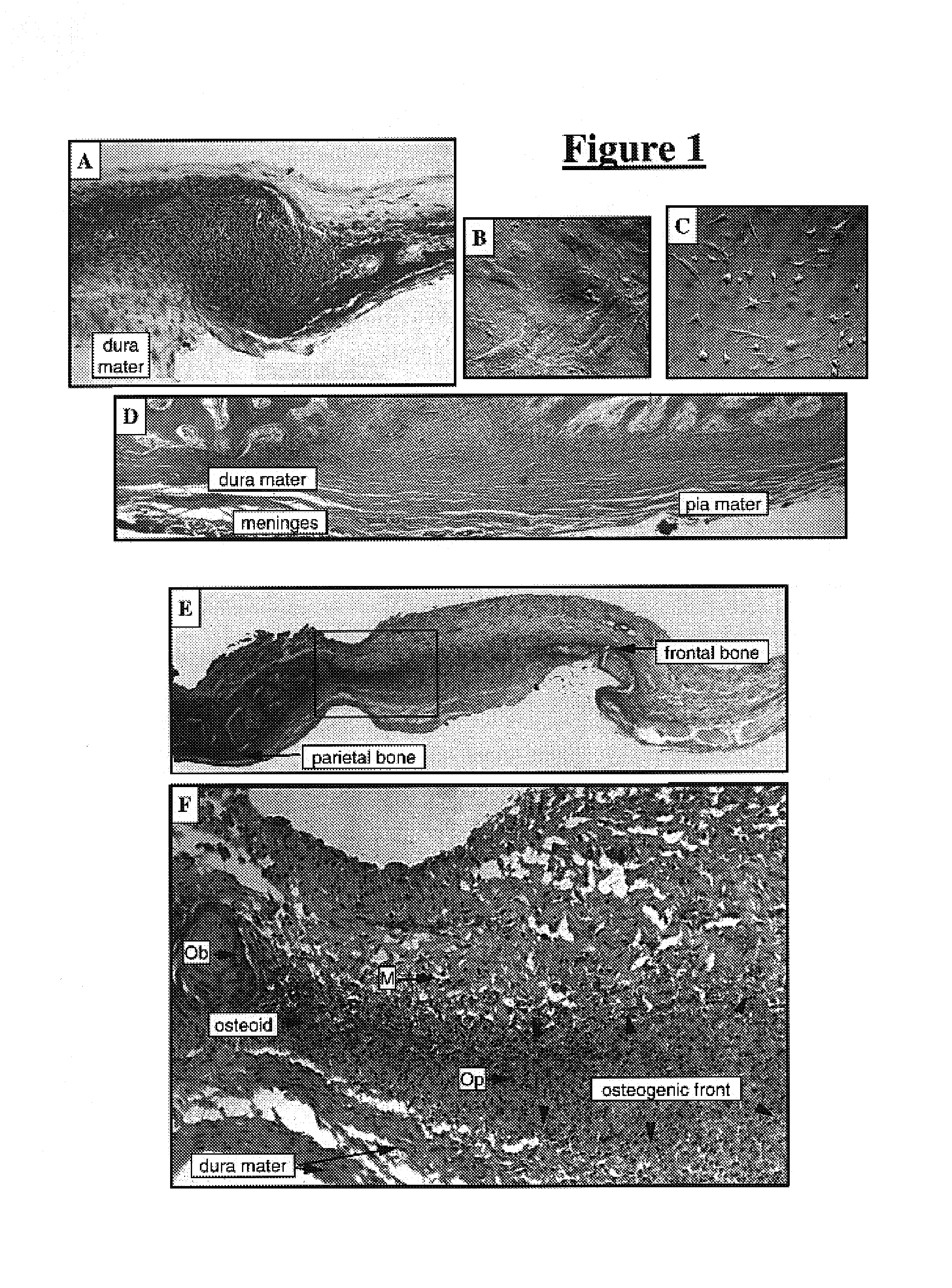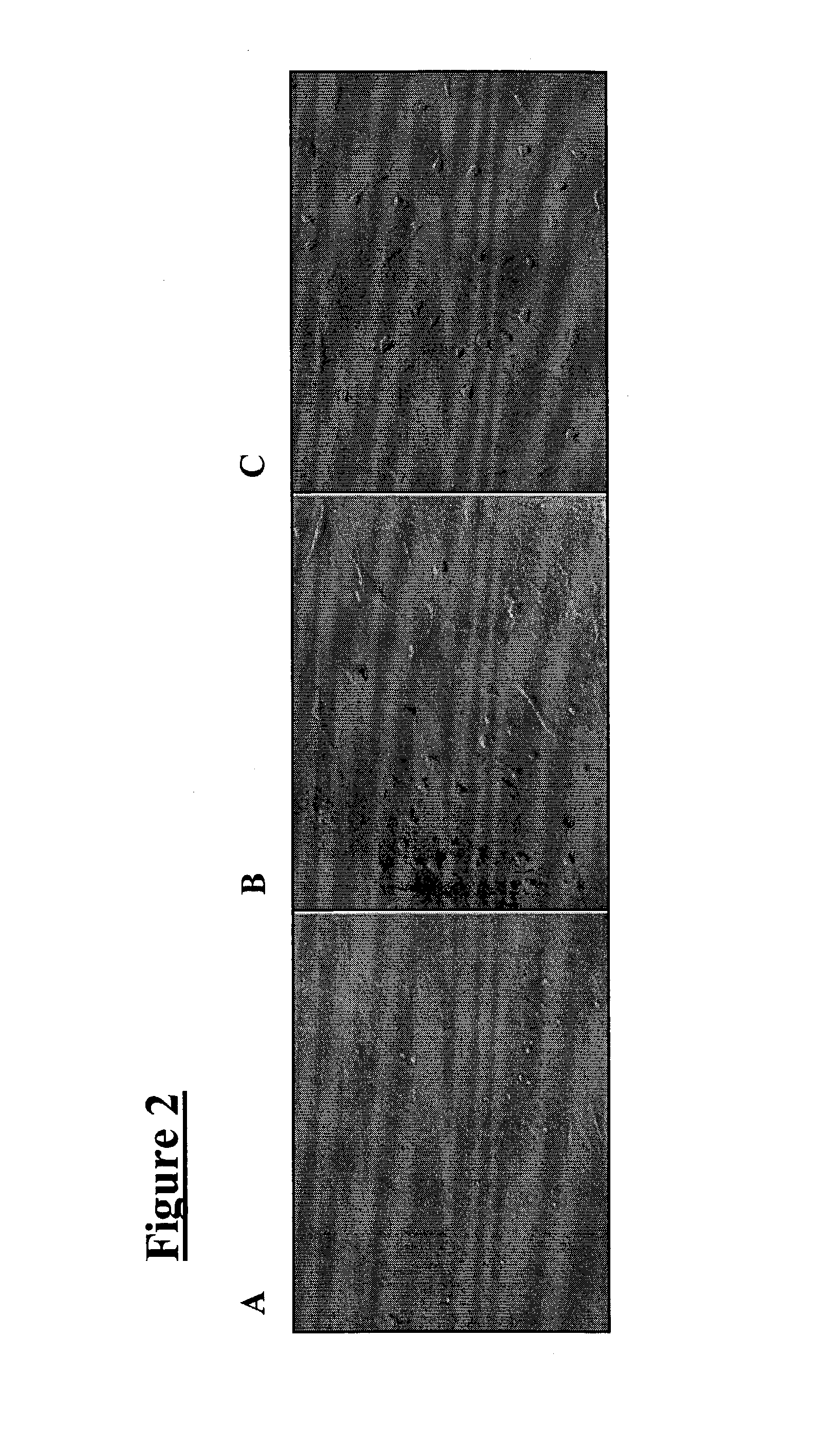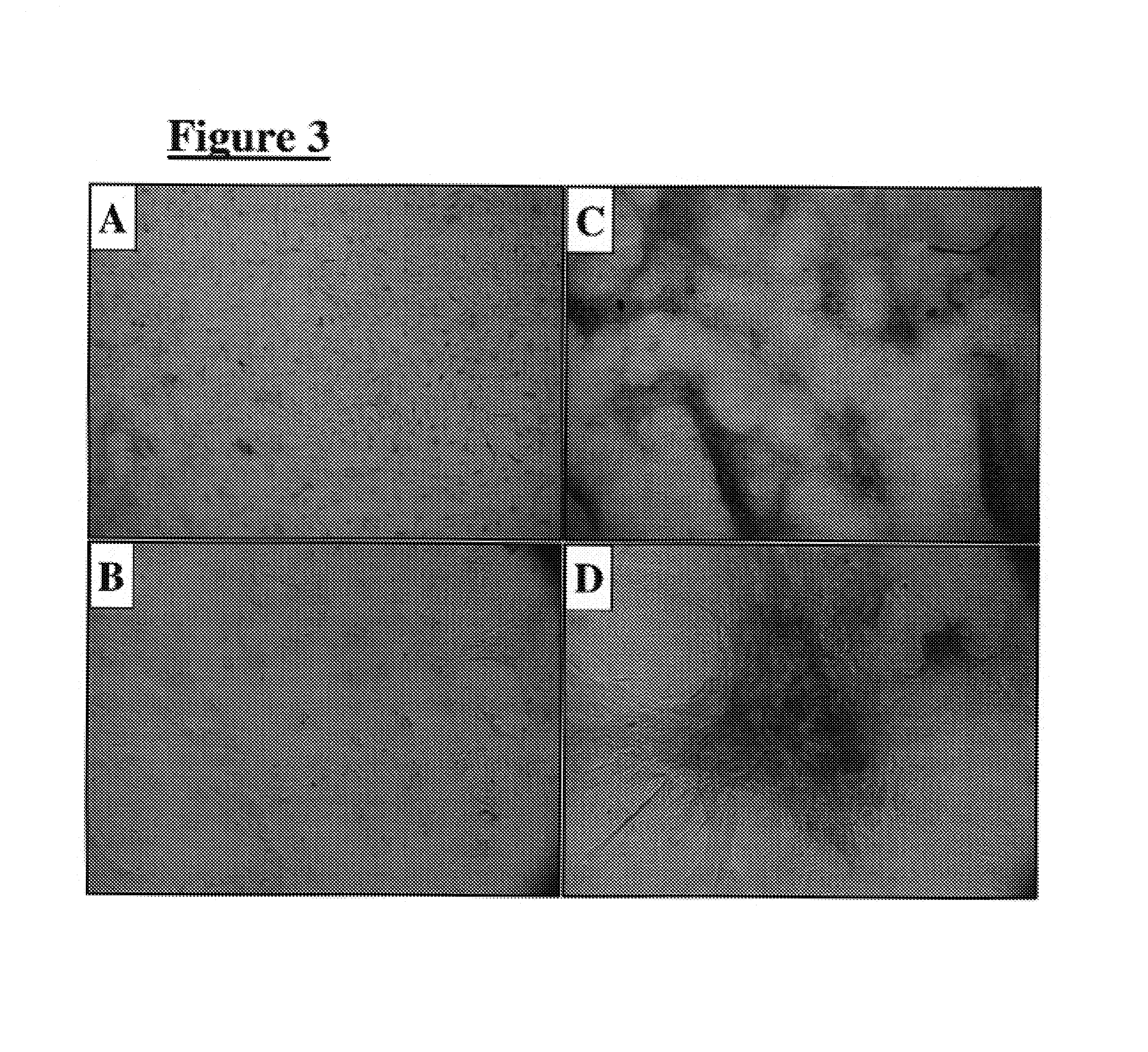Meningeal-derived stem cells
a technology of stem cells and meningeal cells, applied in the field of stem cells, can solve the problems of ethical and political considerations, inability to obtain purified populations of desired cell types, and inability to use these cells, etc., and achieves the effects of high degree of developmental plasticity, robust self-renewal, and easy propagation in cultur
- Summary
- Abstract
- Description
- Claims
- Application Information
AI Technical Summary
Benefits of technology
Problems solved by technology
Method used
Image
Examples
example 1
Preparation of Nerve Cells
[0037]Cells from the meninges that are allowed to become 70% confluent (FIG. 2A) are susceptible to differentiating into nerve under two conditions: antioxidant treatment and steroid hormone treatment. When cells are exposed to a neuronal pre-induction media containing an antioxidant (DMEM, 20% FBS, 1 mM β-mercaptoethanol) for 24 hours, followed by treatment with neuronal induction media also containing an antioxidant (DMEM, 5 mM β-mercaptoethanol), the cells differentiate into neural-like cells within six hours (FIG. 2C). This can also be achieved with other antioxidants (i.e., reducing agents), such as butylated hydroxyanisole (BHA) (approximately 200 μM), dithiothreitol (DTT; i.e., Cleland's reagent), as well as dithioerythritol, tributylphosphine, iodoacetamide, tris-phosphine HCl, deoxythymidine-triphosphate trilithium salt, diethylthiatricarbocyanine perchlorate, diethylthiatricarbocyanine iodide and DECROLINE D (available from BASF Corporation; Mount...
example 2
Preparation of Bone Cells
[0041]Dural cells were forced to adopt a bony phenotype by two separate methods. The first included plating these cells on a MATRIGEL or laminin substrate (100 μg / cm2). Plated cells expressed alkaline phosphatase (a differentiated bone marker) within seven days, and adopted an osteocytic morphology (FIGS. 3C & 3D). Untreated cells showed no staining for alkaline phosphatase (FIGS. 3A & 3B).
[0042]The second method involved exposing the cells to organic and inorganic phosphates. Inorganic phosphates included varying levels (i.e., 3-6 mM) of sodium phosphate and potassium phosphate, and organic phosphates included 10 mM β-glycerol phosphate. In addition, cells were exposed to 50 μg / ml ascorbic acid. Cells under these conditions also expressed alkaline phosphatase (data not shown).
example 3
Preparation of Cartilage
[0043]Cartilage development is fundamentally different from other tissues in that complex three-dimensional interactions are required to form nodules of cartilage in vitro. To accomplish this, a 10 μL volume of a 1×107 cells / mL suspension was plated and allowed to attach to a tissue culture surface. This micromass culture differentiated into cartilage within two weeks when placed in media that contained 1X insulin-selenium-transferrin (ITS diluted 100-fold; available under the tradename ITS+ PREMIX from BD Biosciences) and 10 ng / ml transforming growth factor (TGF)-β1. The production of sulfated proteoglycan as demonstrated by Alcian Blue (available from Sigma-Aldrich Co.; St. Louis, Mo.) staining is indicative of chondrocytic differentiation (FIG. 4).
PUM
| Property | Measurement | Unit |
|---|---|---|
| volume | aaaaa | aaaaa |
| concentration | aaaaa | aaaaa |
| degree of developmental plasticity | aaaaa | aaaaa |
Abstract
Description
Claims
Application Information
 Login to View More
Login to View More - R&D
- Intellectual Property
- Life Sciences
- Materials
- Tech Scout
- Unparalleled Data Quality
- Higher Quality Content
- 60% Fewer Hallucinations
Browse by: Latest US Patents, China's latest patents, Technical Efficacy Thesaurus, Application Domain, Technology Topic, Popular Technical Reports.
© 2025 PatSnap. All rights reserved.Legal|Privacy policy|Modern Slavery Act Transparency Statement|Sitemap|About US| Contact US: help@patsnap.com



